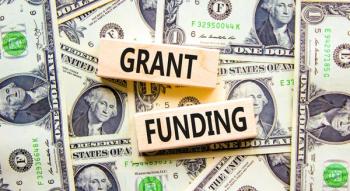
The ultimate veterinary practice killer
What has the ability to squash your business in a single blow? An essential number: the average family income of clients within a one-mile radius of your veterinary clinic.
Recently I was contacted by an extremely personable veterinarian who's approaching retirement age after almost 50 years of struggling to keep clients and staff happy. He has not been able to save enough for a comfortable retirement and has an unprofitable (read: unsellable) practice. I expect that he will, unfortunately, someday be found deceased, slumped over his examining room table—unless he takes drastic action. Here's my advice to him:
Dear Doctor X,
I've studied your situation, your location and your fees and come to some rather unpleasant conclusions. First, let's look at some demographics. If I were to gather up all of the people within a one-mile radius of your front door, we would find that their average family income amounted to no more than $41,868, which is about 30 percent below average for the country. These close neighbors generate an average transaction of only $90 and are more than a little uncomfortable with an exam fee exceeding $40.
So why are you in this undesirable neighborhood? The answer is simple. When veterinarians look to start a practice, they are limited by zoning. And the areas that are affordable, available and appropriately zoned are usually at the fringes of town in less-than-premium locations. These lower rent/mortgage sites are surrounded by either agricultural or industrial areas. They are affordable because they are unattractive to business owners, being far from the residential client base.
This area draws, to put it mildly, less affluent members of the population, few of whom are likely to demand or be able to afford the highest-quality medicine you can provide.
Now, if we were to look at residents beyond that first mile, the outlook would be much better. The next circle I surveyed—all households within a three-mile radius—has an average income of $81,898. Another circle that includes everyone within a five-mile radius averages out to $80,008 per average household. These outer two circles have helped your practice survive.
But unfortunately, the inner circle, this immediate one-mile radius from your front door, has had a toxic effect on you and your practice. In your difficult early years, a huge number of your initial clients were from that one-mile radius, with 30 percent less income to spend on pet care. These lower-income family situations became imprinted on your brain and they have severely affected your long-term vision of your clientele, putting you at a tremendous psychological disadvantage.
These days, when a new client comes in, you subconsciously think, "They can't afford my best treatment." These new clients may actually earn twice or three times the income of your closer clients, but you've had so many high-level medical recommendations refused that you've stopped offering the best options to anyone.
This is such a rampant problem in the veterinary profession that I've had to put a halt to it in most of the practices where I've been brought in to solve problems. In these cases, I've instructed the receptionist to look up new clients' addresses on
This is typical! Many veterinarians like you are simply not charging what they're worth to the larger general population because those in their immediate neighborhood are economically disadvantaged. How much better it would have been if, through financing, you could have afforded the best location available to start your practice. A more affluent location would have shaped your mind to have no hesitation whatsoever about offering only the finest treatments and procedures and leaving the decisions to the clients. But as it is, economics caused you to choose a location that's mediocre at best and that has poisoned your attitude toward the value of your services.
Of course, locating in an ultra-affluent area is not the answer either. Rich people are rich often because they don't pay their bills. It's not what they earn but what they keep that defines their lives. Many veterinarians in super-affluent communities have patients brought in by chauffeurs and private secretaries of celebrities. These clients seldom pay at the time of service, demanding to be billed so that the bills can be ignored.
The best clients are usually blue-collar familes, the mainstay of the middle class with respectable homes in respectable neighborhoods. Their income is 120 percent of national average and they have discretionary income because they are conservative in their spending. Their family values include providing for their ill or injured family pet even at the expense of their annual vacation.
They are easy to identify using any good demographics service. Locating your practice at a visible location within a half-mile of their neighborhood is always a good move—provided that a dozen veterinarians did not get there ahead of you.
Ultimately, you cannot make chicken salad from chicken manure. You need the high-quality ingredients discussed here. Locating your practice correctly is one essential component, making optimum medical recommendations is another, and charging appropriately for your time and services is another. While it will be difficult, your self-inflicted handicap can be cured. Attitude is like a flat tire. You can't go anywhere until you change it.
At the very least, get your receptionist on
*I expect that many will take offense at this tactic and I agree that it's tawdry. The fact that it saves the practices where I use it does not completely justify it. I much prefer the tactic of assuming everyone is economically stable and immediately recommending the best procedure to bring the pet back to optimum health as quickly as possible.
Dr. Gerald Snyder publishes Veterinary Productivity, a newsletter for practice productivity. He can be reached at 536 Grand St., Hoboken NJ 07030; (800) 292-7995; or
Newsletter
From exam room tips to practice management insights, get trusted veterinary news delivered straight to your inbox—subscribe to dvm360.






